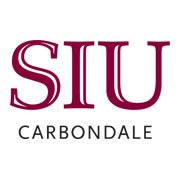
Department of Computer Science
Southern Illinois University
Carbondale, IL 62901

| |
|
|
|
|

|
CS 591: Hot Topics in Cybersecurity
Department of Computer Science Southern Illinois University Carbondale, IL 62901 |

|
| Information ^ |
| Presentations ^ |
For the open-book exams in the form of oral presentations, each student must select two recent papers (published after 2010) only from the conferences listed below. The first paper must be presented sometime between Jan 28 & Mar 06 and the second paper must be presented sometime between Mar 18 & Apr 24.
IEEE Symposium on Security and Privacy (S&P), ACM Conference on Computer and Communications Security (CCS), ACM Symposium on Information, Computer and Communications Security (AsiaCCS), Usenix Security Symposium (Security), Network and Distributed System Security Symposium (NDSS), IEEE Computer Security Foundations Symposium (CSF), Conference on Decision and Game Theory for Security (GameSec), International Conference on Information and Communications Security (ICICS), Information Security Conference (ISC), International Conference on Security and Privacy in Communication Networks (SecureComm), International Conference on Financial Cryptography and Data Security (FC), ACM Conference on Wireless Network Security (WiSec), Annual Computer Security Applications Conference (ACSAC), ACM Conference on Data and Application Security and Privacy (CODASPY), European Symposium on Research in Computer Security (ESORICS), IFIP International Information Security Conference (SEC), Privacy Enhancing Technologies Symposium (PETS), USENIX Workshop on Hot Topics in Security (HotSec), International Conference on Information Theoretic Security (ICITS), International Conference on Applied Cryptography and Network Security (ACNS), International Cryptology Conference (Crypto), European Cryptology Conference (EuroCrypt), Annual International Conference on Theory and Application of Cryptology and Information Security (AsiaCrypt).
Each presentation should have the following seven elements: (1) Contents of the Talk, (2) Problem Statement or Objectives or Motivation, (3) Contribution of the Paper, (4) Preliminaries or Background, (5) Body of the Paper, (6) Conclusion and Future Directions, and (7) Discussion by the Presenter. It is like an open-book exam, therefore, make sure to spend seven to ten days for each paper to fully understand it and to prepare your slides. Each week, you need to evaluate presenters by using Presentation Evaluation form.
Paper Selection Due Dates: First Paper Jan 27 and Second Paper Mar 10. If two or more students select the same paper, the person who has selected earlier will present the paper. Therefore, make sure to chose your papers as soon as possible.


































| Projects ^ |
Each project can be accomplished individually or in a team of two or three students. The project can be "implementation and evaluation", "new cryptographic/security protocols", "a new cybersecurity system", or "a comprehensive survey in certain situations". Topics of interest include, but are not limited to, the following:
Security in auctions or economics, economics of security and privacy, e-commerce security, secure banking and financial web services, security in e-health, security in e-voting systems, privacy enhancing technologies, secure localization and location privacy, censorship and censorship-resistance, security and privacy in social networks, applications of game theory in security, smart grid security and privacy, distributed systems security, cloud computing security, data outsourcing security, security for mobile computing, database security, secure information retrieval, wireless security, security and privacy for smart devices, network security, operating system security, software security, web security and privacy, attacks and defenses in cyberwars, applied cryptography, etc.
Deadline for the Project Approval: Mar 10| Links ^ |
| Policies ^ |
Course Policies: This is a research-based course. Students are initially introduced to some basic concepts of computer security and applied cryptography. Subsequently, the instructor and students present the most recent papers and articles from well-known conferences and journals. It is important to attend all lectures since discussions and clarifications will not be posted on the course homepage. I will consider 10% of the final mark for students' participation and class activities. Students are not allowed to use laptops, smart phones, tablets, etc in the class. Students with disabilities should come and see me. Finally, all exams will be closed-book and there will be no make-up unless a medical report is provided.
Academic Integrity: By enrolling in this course, each student assumes the responsibilities of an active participant in SIUC’s scholarly community in which everyone’s academic work and behaviors are held to the highest standards of honesty. If we catch anyone cheating, we will take the maximum action possible against them, including reporting the matter to the appropriate university authorities. Please cooperate by doing your own work and not seeking inappropriate help from your classmates. You may, of course, discuss assignment solutions and assignments amongst yourselves, as long as that discussion does not lead to an exchange of solutions.
Emergency Procedures: SIUC is committed to providing a safe and healthy environment for study and work. Because some health and safety circumstances are beyond our control, we ask that you become familiar with the SIUC Emergency Response Plan and Building Emergency Response Team (BERT) program. Emergency response information is available on posters in buildings on campus, available on BERT's website, Department of Safety's website (disaster drop down) and in Emergency Response Guideline pamphlet. Know how to respond to each type of emergency. Instructors will provide guidance and direction to students in the classroom in the event of an emergency affecting your location. It is important that you follow these instructions and stay with your instructor during an evacuation or sheltering emergency. The Building Emergency Response Team will provide assistance to your instructor in evacuating the building or sheltering within the facility.